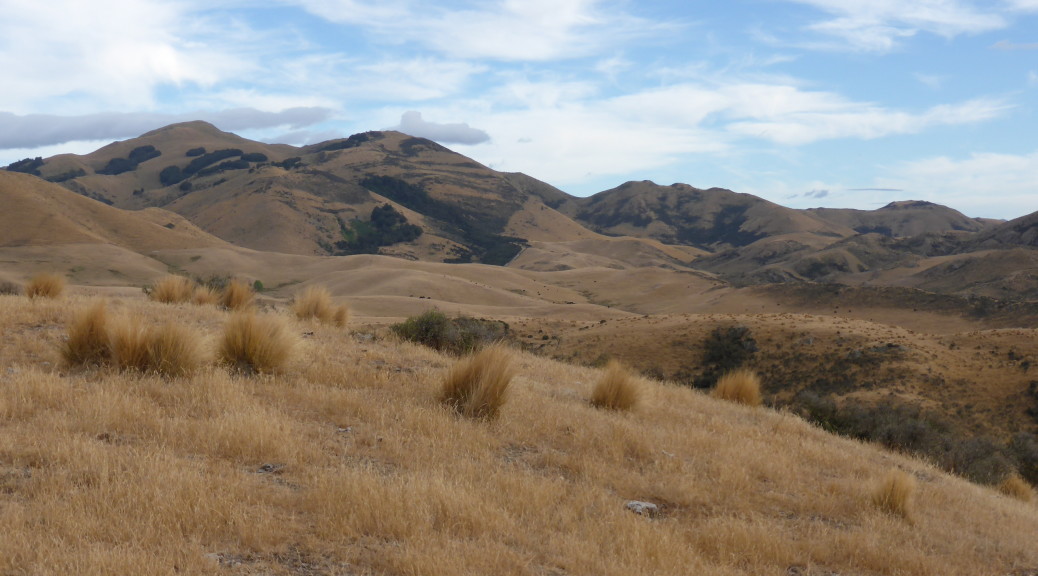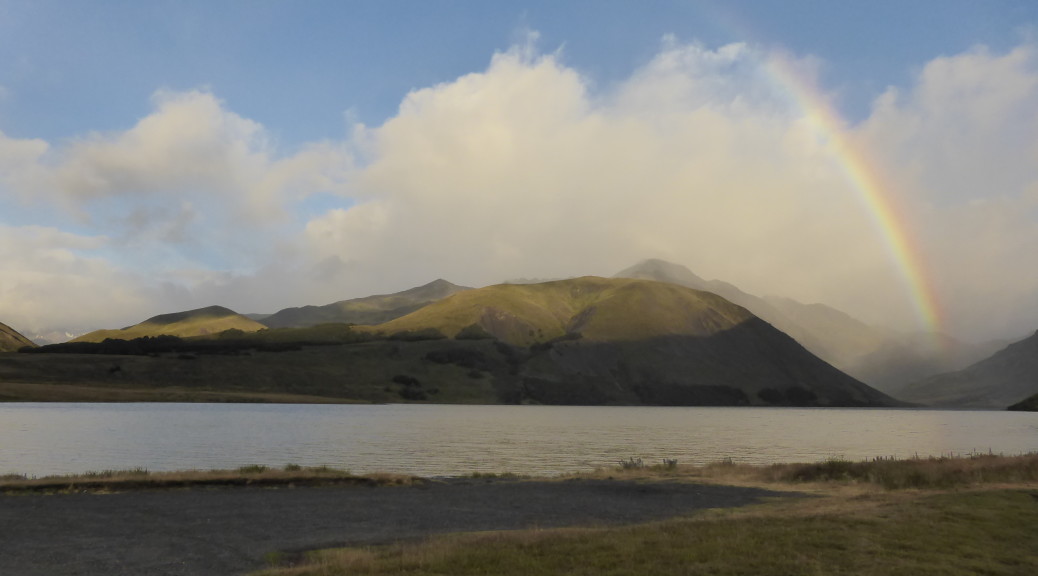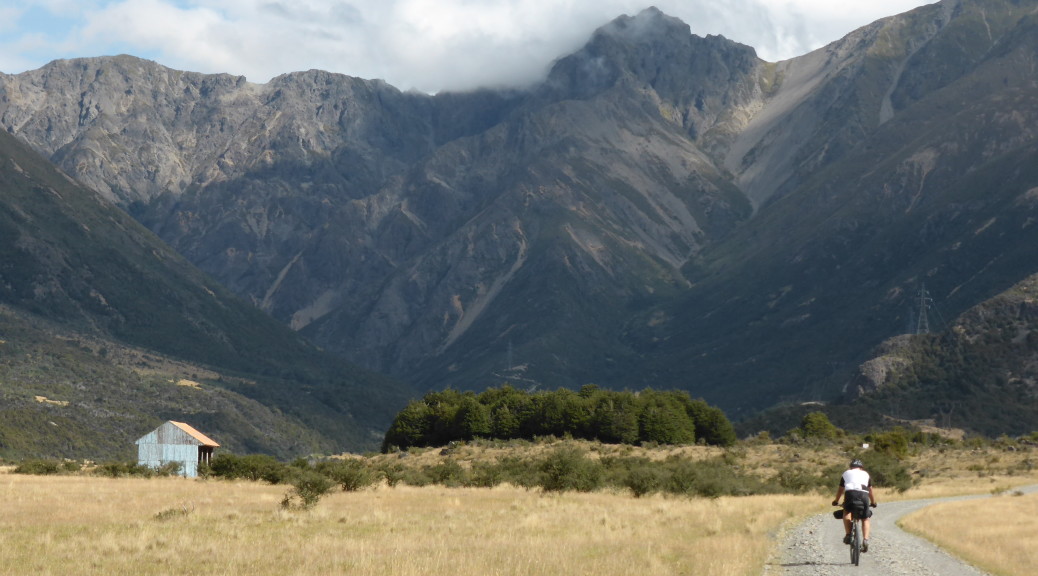I had hoped that a night in a hotel would bring a good night’s sleep. Alas, the heat and the highway traffic conspired against me – the old Hurunui Hotel was so hot I had not only my windows open, but the room door too (it was a rather empty hotel), which let all the noise in from the trucks. For some reason I thought getting up at five o’clock was prudent, as the only other Breveters (rhymes with purveyors we decided) staying in the hotel were.
It turned out to be a wise decision as shortly after either Kirsty or Robyn (I never asked) set off the fire alarm by burning the toast while making the breakfast that had been left out for us. Much hilarity ensued due to the ridiculousness of the situation (it took fifteen minutes for the woken-manager to work out how to turn it off). I hope it is a long time before an automated voice orders me to make my way to the nearest emergency exit again. I may have more permanent damage to my hearing from that fifteen minutes than from ten years working in industry. On a now-still and quiet morning, we hit the road while it was still dark.
As we headed for the hills, the sun rose behind us on the plains and the morning chill disappeared. By now I was riding by myself again and I could take my time as I entered McDonald Downs Station (I think this was the only bit of private land we went on during the event) and wound up, down and around many hills. Never too onerous, it was an absolutely magnificent stretch of riding with the early morning light on the drought-stricken hills and the smell of morning dew thick in air for miles and miles. I tried to take a few photos but it was one of those times where a camera could not come close to capturing all that my various senses were taking in. That ninety minutes still remains as one of the highlights of the week – I was well pleased that the organisers had somehow managed to arrange access to a place I doubt I’ll ever see again.



 Being in such a remote place must do something to one’s sense of humour – apparently it’s 5000 km to nearby Greymouth, but only 3000 km to Sydney.
Being in such a remote place must do something to one’s sense of humour – apparently it’s 5000 km to nearby Greymouth, but only 3000 km to Sydney.
 This particular Monday seemed a busy one for farmers (& apiarists – I saw quite a few) – here is one of the few traffic jams of sheep or cattle I got caught in, maybe they were all destocking due to the drought conditions.
This particular Monday seemed a busy one for farmers (& apiarists – I saw quite a few) – here is one of the few traffic jams of sheep or cattle I got caught in, maybe they were all destocking due to the drought conditions.
Climbing up to Lees Pass we were back on the road and out of McDonald Downs – there was a section of about thirty kilometres mostly cruising down the road in Lees Valley before we turned off to take 4WD trail to the Wharfedale Track. The access trail climbed gradually with a fair few stream crossings near the end that weren’t rideable. It wasn’t far along the track to the Wharfedale Hut – which had a surprising amount of food left there by previous visitors.
 I rested at the Wharfedale Hut for half an hour, mostly because I could, and snapped this shot – just to mirror the one I took seven and a half years ago.
I rested at the Wharfedale Hut for half an hour, mostly because I could, and snapped this shot – just to mirror the one I took seven and a half years ago.
Climbing up to the saddle, the sixteen kilometre section of track was pretty rugged due to frequent washouts – & not nearly as much fun with a loaded bike as it was with a full-suspension trail bike those years ago. One particular part of the track had washed out so much there was less than a foot of trail width to traverse a few metres above a five metre sheer bank. I shuffled across with my bike on the outside of the trail to come across Alistair – poor guy had just spent an hour getting himself, his bike and all his gear back up the bank after they all went down together! Finally the high point was attained and there was a bit of downhill to enjoy at the weather rolled in from the west – managed to not get wet, despite the ominous looking clouds banking up.
Back on roads of various states, it was a gravity & wind assisted ride into Sheffield – unfortunately the renowned pie shop was shut so late in the afternoon. Disappointed, I resolved to eat more pies later in the week. After a refreshment stop at the pub I turned into what was now a howling norwester. So strong was the wind, the flat ten kilometres out of Sheffield took me fifty minutes of constant futile-seeming effort, often trying to hide in the lee of the occasional shelter belt of trees.
Reaching Springfield I restocked on food at the gas station (finally got a pie) and, looking at the sky, contemplated my next move. After the slow progress on the Wharfedale and into the wind out of Sheffield and considering the black clouds rolling over the hills (where the course went next) I thought it a good idea to stay put for the night. Unfortunately the pub was closed on a Monday night (what?!), so it was a variety of gas station food for dinner – not as bad as it sounds – and I camped at the sheltered local domain and had a fantastic night’s sleep.





 From Maling Pass looking down to the Waiau.
From Maling Pass looking down to the Waiau.



 Seymour Square – the night before, prior to be filled with bikepackers. No Cycling signs – what No Cycling signs?
Seymour Square – the night before, prior to be filled with bikepackers. No Cycling signs – what No Cycling signs?


 Somewhere after Porters Pass, but before Arthurs – when the wind was still with me.
Somewhere after Porters Pass, but before Arthurs – when the wind was still with me.